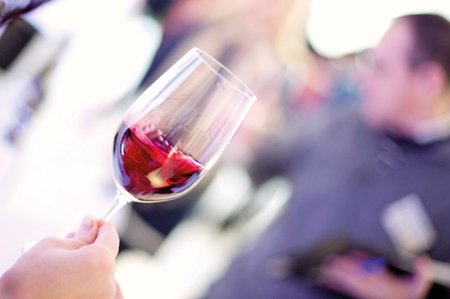Italy: North-East, including Soave, Amarone & Valpolicella
The big-name regions might not all have delivered, but there were plenty of really good, sommelier-friendly wines here at decent prices
Outside the blingy, show-off wines of Tuscany, the north-east of the country has often been Italy’s best performer in the Sommelier Wine Awards, particularly when it comes to red wines. This year, honours were more or less evenly split between reds and whites, with the focus generally moving away from the big-name wine styles.
Key to success in the SWA are versatility and drinkability, and the latter is an area where the region’s big-budget wine style, Amarone, has often struggled in this competition in the past. Far too many entries are simply too tough and tannic to pick up medals, let along Golds.
 Zenato’s 2008 Amarone Classico, which picked up Gold this year, was eminently drinkable, a great example of its style and, at under £30, positively bargain basement by the standards of the region. ‘People like a certain style of Amarone, and this offers just that,’ said Studio Alto’s Neil Bruce. ‘Big, rich, plush fruit and tannins, with plenty of distinct character – it’s a wine drinking well now (not in five years) that you could pair with venison or game.’
Zenato’s 2008 Amarone Classico, which picked up Gold this year, was eminently drinkable, a great example of its style and, at under £30, positively bargain basement by the standards of the region. ‘People like a certain style of Amarone, and this offers just that,’ said Studio Alto’s Neil Bruce. ‘Big, rich, plush fruit and tannins, with plenty of distinct character – it’s a wine drinking well now (not in five years) that you could pair with venison or game.’
Amarone’s baby brother, Valpolicella, meanwhile, misbehaved somewhat this year. By rights, it ought to be smack in the centre of the ‘Sommelier Love’ Venn diagram, where neat fruit, good acidity, round tannins and real food flexibility all intersect.
So much for the theory.
There were no Golds last year, just lots of grumbling about the pricing, and it was more of the same this year. ‘Some of them didn’t deliver exactly what you would expect a wine at that price to deliver,’ said Dabbous’s Charles Pashby-Taylor, as his team complained about ‘angularity’ and ‘clumsiness’ in the wines.
Certainly, given the prices being asked, the sommeliers were right to want wines that could walk across their palate with grace, rather than trip over their own feet.
The remaining reds from the region were a mixed bag, with some tasters hymning their ‘elegance, easy-drinking style and lack of astringency’, and others complaining about ‘lack of balance, thinness and [er] astringency’.
Still, one thing they did have on their side when they got it right was that they were significantly more affordable than many Italian reds.
‘There were a lot of good wines here for By The Glass, friendly wines at entry prices and upwards, with elegance and an ease of drinking, still “Italian”, but without astringency or chewy tannins,’ said Jeremie Guiraud, from Lords of the Manor.
The best example was the magnificently named Nerello del Bastardo, which delivered a lot of distinctive quality for the price.
‘This was a wine that spoke of Italy, but also the gentler, hugely fresh wines of the north-east,’ said team leader Peter McCombie MW. ‘This had a gentle, fresh drinkability, really focused and well balanced, and the fresh acidity to cut through any number of oily/fatty, quite rich dishes.’ Also the smoky, brambly Cavit Lagrein, which has picked up Gold here before and did so again at a good price.
For the whites, this was a very mixed story. Soave, in particular, was underwhelming. Our tasters could totally see a case for it: offering a slightly more interesting alternative to Pinot Grigio at a slightly higher price. And the two Silver medal winners were both good wines; the Bertani in a fresh aperitif/fish kind of way, and the Suavia richer-textured with ‘hints of Burgundy’ about it.
But really a big-name region like this ought to be able to deliver a lot more than a pair of Silvers and a lone Bronze. Opportunities for next year, perhaps.
For the remaining whites our tasters found a lot to like. Two Gold-listed wines is a good, rather than earth-shattering performance, but the plethora of Silver medals supporting them shows a category with a good deal of depth to it, particularly when the winemakers didn’t allow a surfeit of ambition to cloud the natural beauty of the fruit.
‘This flight was up and down like the foothills and valleys of the mountains,’ said Enigma 88’s Michael Moore, poetically. ‘The better wines were at the lower end, attractive, fresh, crisp, allowing the natural purity of fruit to come though, with some attractive value on offer.’
They wouldn’t, perhaps, be an easy sell, but with decent pricing and real food friendliness, they were reckoned to be a massively useful addition to any list.
‘They’re incredibly flexible with food, working not just with seafood, but also white meats such as pork and veal,’ said The Marylebone Hotel’s Mark Deamer. ‘Really useful for customers wanting to stay with fresher styles, with white wines, with main courses.’
‘Valpolicella is a cool-climate style, so it’s quite vintage dependent. We saw a lot of basic wine from second-rate fruit. There was no pleasure in drinking most of them.’ Christine Parkinson, Hakkasan Group
‘The whites might be a hand sell, as people don’t really know about these wines, but the elegance and expressiveness shown here means that these would be great assets to the sommelier.’
Laura Ward, Vivat Bacchus